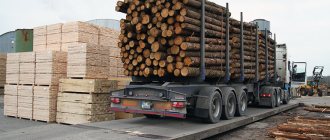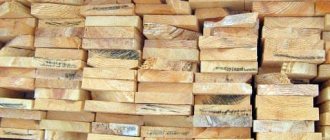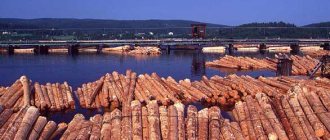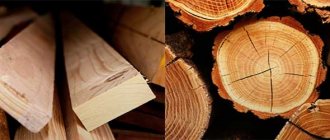One of the traditional types of industry, which continues to develop in our time of scientific and technological achievements, is the forestry and wood processing industry. This article tells you what branches the forest industry is divided into, what products they produce, where the raw materials are mainly sourced, and what consequences deforestation has.
Types of forest industry
The forestry industry is a set of industries united by a common source material - wood raw materials, from which, during the processing process, various types of finished products are obtained, as well as semi-finished products for other sectors of the national economy.
Forestry has the following structure:
- Logging industry. Engaged in the procurement of wood raw materials and its transportation to processing enterprises, and the disposal of wood waste.
- Woodworking industry. Processes wood raw materials using mechanical and chemical methods to obtain finished products, for example, parts of various vehicles (railway cars, ships and others), as well as finished products, for example, matches.
- Pulp and paper industry. Engaged in the production of paper, cardboard and pulp from wood raw materials.
- Timber chemical industry. It is engaged in the chemical production of various, mainly liquid, substances, such as alcohol, from wood waste.
In all of these industries, the USSR has been doing business for many decades, and Russia currently occupies leading positions in the world, competing with the USA, Canada and a number of European countries.
Leading manufacturing companies
Major players in the woodworking market include:
- Cherepovets Plywood and Furniture Plant (ChFMK);
- Volgodonsk wood panel plant;
- "Surgutmebel";
- Alapaevsky DOZ;
- Onega LDK;
- Belsky DOK;
- Dyatkovsky DOZ;
- Inzensky DOZ;
- Perm DSK;
- Sokolsky woodworking plant (JSC "S-DOK").
Other companies operating in this industry are presented in the Woodworking Plants section.
Distribution of forest resources
Conventionally, we can designate two belts in which the world's forest resources are located. These zones are determined by climatic conditions and the types of trees growing in their territories. The belts occupy approximately equal areas. More forested areas in both zones are those in which there is no shortage of moisture, and less forest cover occurs in areas with moisture deficiency.
Northern belt
Located in Eurasia and North America. The largest forest reserves are located in taiga regions. About two-thirds of the belt's territory is occupied by coniferous forests. The countries covered by the largest forest areas are Russia, Canada, the USA, Finland and Sweden. In the last four countries, despite the significant scale of deforestation, the forest area is not decreasing, since forest restoration work is being intensively carried out in them. Forest surplus regions of Russia are the north of the European part, Siberia and the Far East.
Southern
Located in Latin America, Africa and Southeast Asia. These are equatorial, subequatorial and tropical forests. Most of the trees are broad-leaved species. The largest forest areas are in Brazil, Indonesia, Malaysia and Cambodia. At the same time, in Brazil, forests are distributed unevenly across the territory: in areas with moisture deficiency, forest areas are insignificant. In Africa, the largest forest areas grow in Congo, Cameroon and Equatorial Guinea. The reduction of forest areas is significantly influenced by the slash-and-burn system of agriculture and grazing.
Cutting and drying
These two processes are closely related, and they can follow in different sequences in an enterprise. Most often, the wood is dried directly in boards, and the lumber is cut into blanks already dry. As experts note, if drying is carried out in boards, then the output is 2-3% more lumber. In addition, cutting already dried boards allows you to promptly notice defects and flaws in the wood and reject unsuitable elements.
The technology of woodworking production involves drying in several ways, but most often - either atmospheric or using special chambers. Atmospheric drying is a long process that involves storing wood in the open air. The use of drying equipment allows you to speed up the logging process. It is worth remembering that the quality of the final construction depends on the degree of drying of the lumber.
Production products
Groups of products produced by the forestry industry differ in the degree of application of complex technologies and modern achievements of science and technology. In logging, production volumes and quality are mainly influenced by the cutting and sawing techniques available at the sawmill, and the degree of novelty of the tools used; storage technologies are of some importance. In woodworking, drying technologies for raw materials and finished products already play an important role. In the forest chemical industry, chemical processing of raw materials is used, and in the pulp and paper industry, the use of chemical technologies takes the form of a more complex cycle.
Woodworking products have the widest range of products.
These are mainly the following products:
- wood sheets and boards;
- sleepers;
- plywood;
- bars;
- furniture designs;
- window and door structures;
- parquet;
- floor board;
- container;
- matches.
Russia is one of the world leaders in terms of production volumes of these types of products. The European forest industry for these species is headed by Finland and Sweden.
In the pulp and paper industry, mechanical and chemical wood processing methods are used for production.
It produces the following types of products:
- paper of various types, including sanitary, household, technical and decorative purposes, in the form of stationery;
- cardboard;
- cellulose;
- viscose.
It is in this branch of the forestry industry that, thanks to the use of sophisticated equipment and technologies, products with the highest added value are produced.
The wood chemical industry is also based on the chemical processing of wood.
Types of products it produces:
- charcoal;
- rosin;
- phenol;
- alcohol, methyl and ethyl;
- glue;
- acetone;
- camphor;
- glycerol;
- turpentine;
- tar;
- varnishes;
- artificial fibers;
- cellophane;
- linoleum.
Enterprises in this industry are often located in close proximity to logging sites, where complete infrastructure exists.
History of appearance
Woodworking has been around for a very long time. True, in the old days industrial enterprises were not built, there was handicraft: wooden objects were made using handicraft methods.
It began to “transform” into a separate type of production only in the 18th century, and actively developed in the second half of the 19th century. At this time, enterprises began to be created (the first were opened in the Arkhangelsk region), specializing not only in cutting wood, but also in the production of furniture, plywood, and matches. At that time, production volumes were quite large, but the technical state of the industry itself remained insufficient (when compared with foreign factories of that time).
In the 30-40s of the 20th century, there was an increase in capital construction in Russia. Wooden products (furniture, windows) were in demand, so woodworking enterprises were at the peak of popularity. At this time, many of them began to introduce automated and mechanized production processes.
During the Second World War, much was destroyed, and the development of industry was slowed down for a long time. However, in the post-war years the situation began to improve little by little.
Now the industry continues to develop, which makes it potentially attractive for investment.
Meaning
Wood and products made from it have played and continue to play an important role both in other types of industry and in everyday life.
Let us highlight this value for the products of the forestry and woodworking industries.
- Logging industry. Both industrial and fuel wood are harvested. The first is a raw material for other types of industry, and the second (firewood) is used for heating. The share of fuel wood in the total volume of harvested materials is especially high in the countries of the southern belt.
- Woodworking industry. Despite the emergence of more and more new synthetic materials, wooden parts are used in various vehicles (trains, cars, airplanes), the most expensive and prestigious furniture is also made of wood. Construction is still impossible without wooden structures.
- Pulp and paper industry. The largest share is in the production of printing paper, which is needed for book printing and the production of stationery. It is difficult to find an alternative to cardboard and paper products in the packaging of various goods. Paper is also needed for sanitary and hygienic purposes. Worldwide paper consumption continues to grow. Viscose is used in the textile industry.
- Timber chemical industry. The various liquid substances it produces are used to care for a wide variety of surfaces. Linoleum is a natural floor covering and this is often the main factor in choosing among many types of coverings.
Please note that wood is a renewable resource.
The photo below shows a Ferrari 365 V12 engine made of wood.
Geography of industrial facilities location
Despite the fact that for production it is much more convenient to be closer to the raw material base (saving on delivery, which greatly reduces the cost and promotes profit growth), when locating enterprises, not only this factor is taken into account, but several others:
- availability of water and energy sources (companies in this industry are energy-intensive);
- convenient transport infrastructure;
- sufficient labor force.
In addition, proximity to the potential consumer is also important.
The problem of deforestation
The problem of deforestation is currently acute for all continents of the planet. However, the nature of Western Europe, South America and Southeast Asia suffers the most significant damage from it.
The following facts give an idea of the scale of the damage:
- Over the past few centuries, more than half of the world's tropical forests have been cut down, and the forest-deficient zone is increasing in the corresponding zone;
- less than one third of the land is occupied by forests;
- Due to deforestation, the concentration of carbon monoxide in the atmosphere is sharply increasing.
Deforestation is often carried out illegally (without permission for this type of activity) or with significant violations on the part of entrepreneurs.
The problem relates not only to the state of the landscape, but also to the entire ecosystem, including flora and fauna, the state of drinking water and air. The forest protects the soil from erosion. What oceans there are, you will find the answer in the link.










